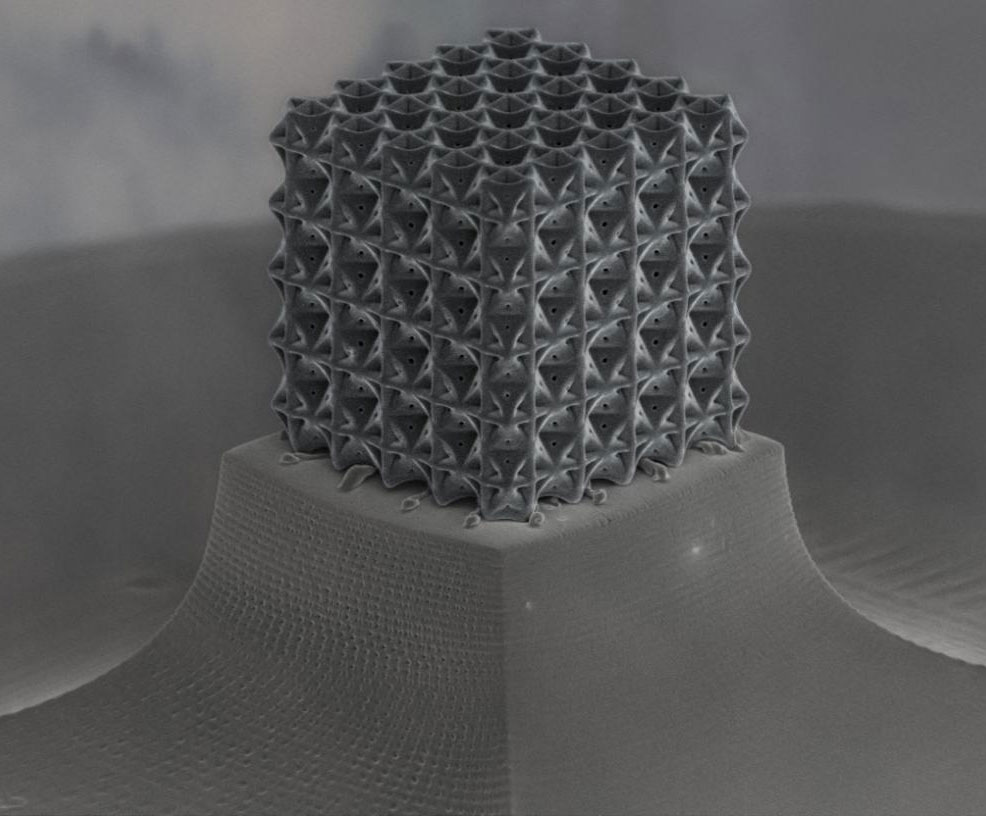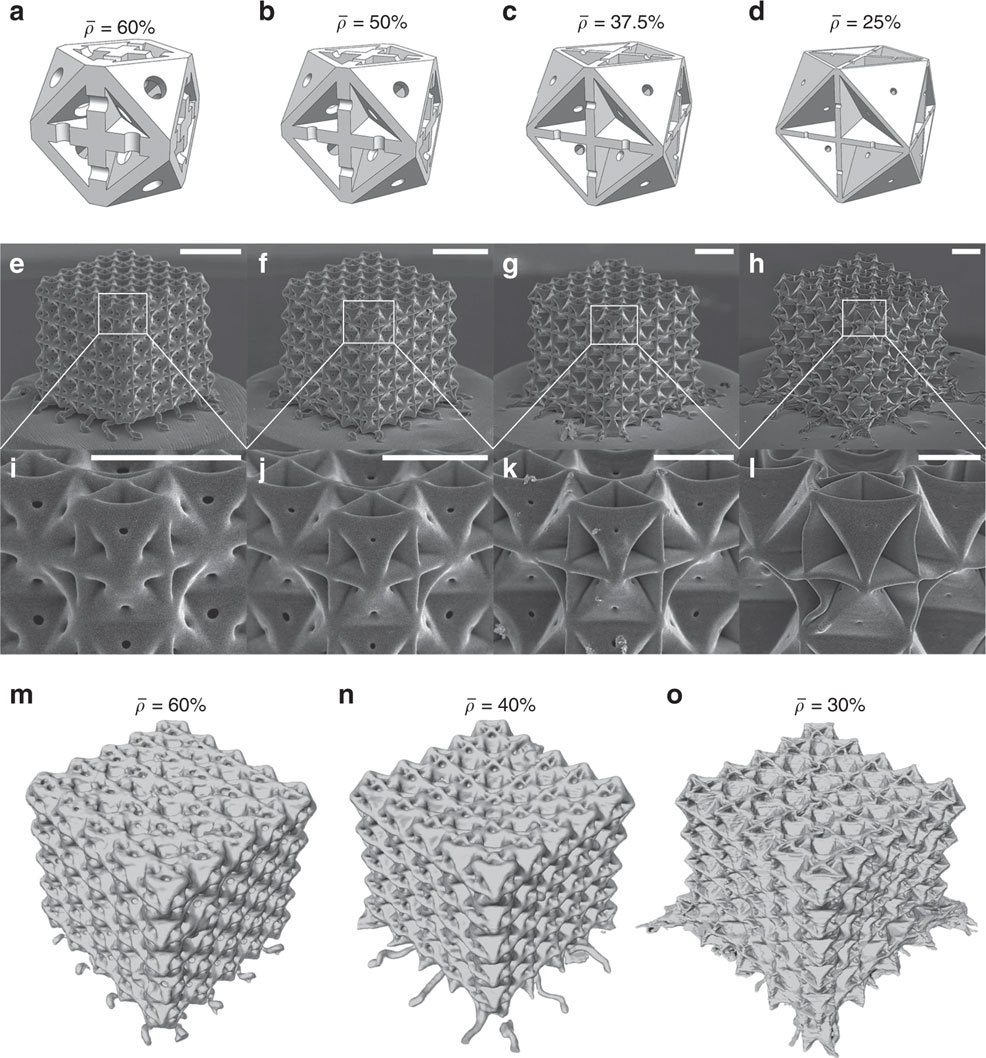
20th April 2020 Carbon nanostructure is stronger than diamonds Researchers have designed plate-nanolattices – nanometre-scale carbon structures – that are stronger than diamonds as a ratio of strength to density. The scientists – from the University of California, Irvine (UCI) and other institutions – successfully conceptualised and fabricated the material, and report their results in the journal Nature Communications. The new structure consists of closely connected, closed-cell plates, instead of the cylindrical trusses common in other nanostructures of the past few decades. "Previous beam-based designs, while of great interest, had not been so efficient in terms of mechanical properties," said corresponding author Jens Bauer, a UCI researcher in mechanical and aerospace engineering. "This new class of plate-nanolattices that we've created is dramatically stronger and stiffer than the best beam-nanolattices." According to the paper, the team's design has been shown to improve on the average performance of cylindrical beam-based architectures by 639% in strength and 522% in rigidity. The findings were verified using a scanning electron microscope and other technologies provided by the Irvine Materials Research Institute.
"Scientists have predicted that nanolattices arranged in a plate-based design would be incredibly strong," explains lead author Cameron Crook, a UCI graduate student in materials science and engineering. "But the difficulty in manufacturing structures this way meant that the theory was never proven, until we succeeded in doing it." The team's breakthrough relies on a complex 3D laser printing process, called two-photon lithography direct laser writing. As an ultraviolet-light-sensitive resin is added layer by layer, the material becomes a solid polymer at points where two photons meet. The technique can render repeating cells that become plates with faces as thin as 160 nanometres (nm). One of the group's innovations was to include tiny holes in the plates that could be used to remove excess resin from the finished material. As a final step, the lattices go through pyrolysis, in which they are heated to 900 degrees Celsius in a vacuum for one hour. According to Bauer, the end result is a cube-shaped lattice of glassy carbon, featuring the highest strength scientists ever thought possible for such a porous material. "As you take any piece of material and dramatically decrease its size down to 100 nanometres, it approaches a theoretical crystal with no pores or cracks. Reducing these flaws increases the system's overall strength," explains Bauer. "Nobody has ever made these structures independent from scale before," adds Professor Lorenzo Valdevit, who directs UCI's Institute for Design and Manufacturing Innovation. "We were the first group to experimentally validate that they could perform as well as predicted, while also demonstrating an architected material of unprecedented mechanical strength." Nanolattices hold great promise for structural engineers, particularly in aerospace, where the combination of high strength and low mass density could greatly enhance aircraft and spacecraft performance.
Optimised two-photon polymerisation direct laser writing (TPP-DLW) printing strategies and the nanometre-size face-holes facilitate undistorted, virtually closed-cell plate-nanolattices. Deformations occurring at the lowest relative densities (ρ) are localised to the surfaces of the structures. Credit: Crook, C., Bauer, J., Guell Izard, A. et al.
Comments »
If you enjoyed this article, please consider sharing it:
|








